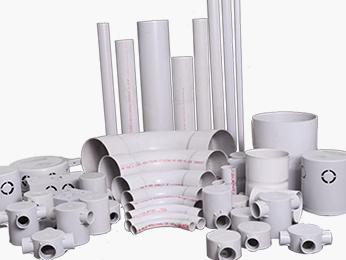Introduction
PVC Pipe Accessories are an integral part of the plumbing system in any modern home. Polyvinyl Chloride (PVC), known for its durability and cost-effectiveness, is widely used in the manufacturing of these accessories. This article serves as a comprehensive guide for homeowners to understand and make informed decisions about PVC pipe accessories.
Understanding PVC and Its Benefits
What is PVC?
PVC, or Polyvinyl Chloride, is a versatile plastic used in a wide range of applications. In the context of plumbing, it is prized for its strength, lightweight nature, and resistance to corrosion and chemicals.
Advantages of PVC in Plumbing
-
Durability: PVC pipes and accessories are known for their longevity, often outlasting the buildings they are installed in.
-
Corrosion Resistance: Unlike metal pipes, PVC is immune to corrosion and chemical degradation.
-
Low Cost: Compared to other materials like copper or stainless steel, PVC is considerably more affordable.
-
Ease of Installation: PVC pipes can be cut, shaped, and joined easily, making installation a breeze.
Types of PVC Pipe Accessories
Common PVC Accessories
-
Elbows: Used to change the direction of the flow in a piping system.
-
Tees: Allow for the splitting or combining of flow in the system.
-
Couplings: Utilized to connect two pipes of the same diameter.
-
Caps and Plugs: Used to close the end of a pipe.
Specialized Accessories
-
Reducers: Enable the connection of pipes of different diameters.
-
Unions: Allow for easy disconnection of pipes for maintenance.
-
Valves: Control the flow of water within the system.
Installation and Maintenance of PVC Pipe Accessories
DIY Installation Tips
-
Measuring and Cutting: Ensure accurate measurements and use a fine-toothed saw for clean cuts.
-
Joining Pipes: Use PVC primer and solvent cement for a strong bond.
-
Alignment: Proper alignment is crucial to prevent leaks.
Maintenance and Care
-
Regular Inspection: Check for leaks or damage, especially at joints.
-
Cleaning: Keep the pipes clean to prevent blockages.
-
Avoid Chemical Damage: Be cautious of chemicals that can damage PVC.
Environmental Considerations
Sustainability of PVC
PVC is a subject of debate in terms of environmental sustainability. While it is durable and has a long life, its production and disposal raise concerns. Recycling PVC can mitigate some environmental impacts.
Eco-Friendly Alternatives
For environmentally conscious homeowners, there are alternative materials like ABS (Acrylonitrile Butadiene Styrene) or PEX (Cross-linked Polyethylene) which offer similar benefits to PVC but with a different environmental footprint.
Common Applications in Homes
Where PVC Accessories are Used
-
Water Supply Lines: Used extensively in residential water supply systems.
-
Waste and Vent Systems: PVC is ideal for sewage and vent pipes due to its chemical resistance.
-
Irrigation Systems: Widely used in home gardens and lawn irrigation systems.
Troubleshooting and Solutions
Common Issues
-
Leakage: Often caused by improper installation or alignment.
-
Blockages: Can occur due to build-up in the pipes.
Solutions
-
Leak Repair: Use sealants or replace the affected accessory.
-
Clearing Blockages: Use a plunger or a plumber’s snake.
Conclusion
PVC Pipe Accessories are a cornerstone of modern plumbing. Their affordability, ease of installation, and durability make them an excellent choice for homeowners. By understanding the types, installation, and maintenance of these accessories, homeowners can ensure a reliable and efficient plumbing system. While considering the environmental impact, it’s also important to explore sustainable alternatives and recycling options to mitigate any negative effects.



